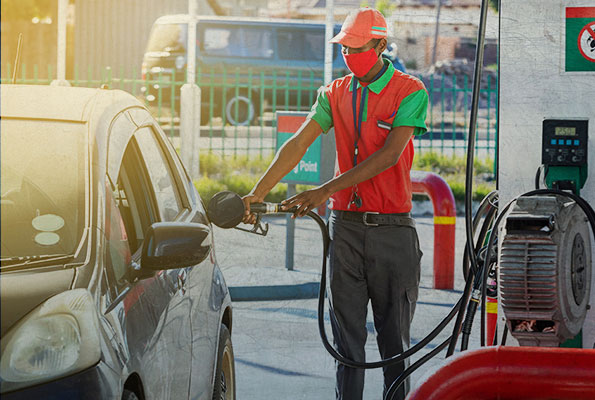Notwithstanding the steady decline in the price of crude oil, Kenyans will still have to deal with high fuel prices as the energy regulator increased the cap for super gasoline by Ksh2 (USD 0.015) to Ksh179 (USD 1.38) per litre.
The Energy and Petroleum Regulatory Authority (Epra) said that the prices of diesel and kerosene, which are supported by subsidies, will remain unchanged at Ksh162 (USD 1.25) and Ksh145.94 (USD 1.12) per litre, respectively.
The regulator said that the FOB (Free on Board) price of Murban crude oil dropped to USD 80.11 per barrel in February 2023, a loss of 11.87%.
The landed cost of petrol and diesel also decreased in the same period by 0.06% and 2.52%, respectively. This reduced the price per cubic metre to USD 659.47 and USD 779.88, respectively.
Change In Value
Yet, over the same time period, the rate of currency depreciation climbed to 2.56%, placing pressure on the exchange rate and driving up the price of imports for local consumers.
Because the value of the Kenyan shilling has fallen from Ksh125 to roughly Ksh130 per US dollar in February 2023, the increase in the price of petrol has made up for the loss in value.
To lessen the pressure on the exchange rate, however, as foreign exchange reserves continue to decline, the government is currently in discussions with state-owned oil corporations from Gulf nations to permit deferred payments for oil imports.
Imports For Two Months
After the review in mid-November of last year, fuel prices in Kenya have stayed steady. Nevertheless, the Energy and Petroleum Cabinet Secretary Davis Chirchir intimated in late February 2023 that prices would start to decline around April or May as prices on the global market continue to decline.
According to Mr Chirchir, Kenya buys oil on an M+2 basis (for the next two months). Therefore, the market’s easing would be felt in Kenya in April or May. However, the most recent analysis calls into doubt those claims.
Tanzania now has the lowest petrol prices in the region (USD 1.27 per litre), followed by Uganda (USD 1.34 per litre), Rwanda (USD 1.417), and the Democratic Republic of the Congo (USD 1.39).
Comes Amid A Neck-Breaking Inflation
Kenya’s economy has been facing an increasing heat due to the rising food prices, which have put households under pressure, apart from shooting up the cost of living, with new data indicating that inflation climbed to 9.2% in February 2023, as some food costs went up to 11% more than they did in January this year.
This is a reverse trend. It is coming after inflation slowed for three consecutive months to hit 9% in January 2023, after accelerating through 2022, seeing households struggle with a high cost of living.
The Kenya National Bureau of Statistics (KNBS) Consumer Price Index (CPI) showed that in February 2023, food commodities contributed greatly to the high inflation.



